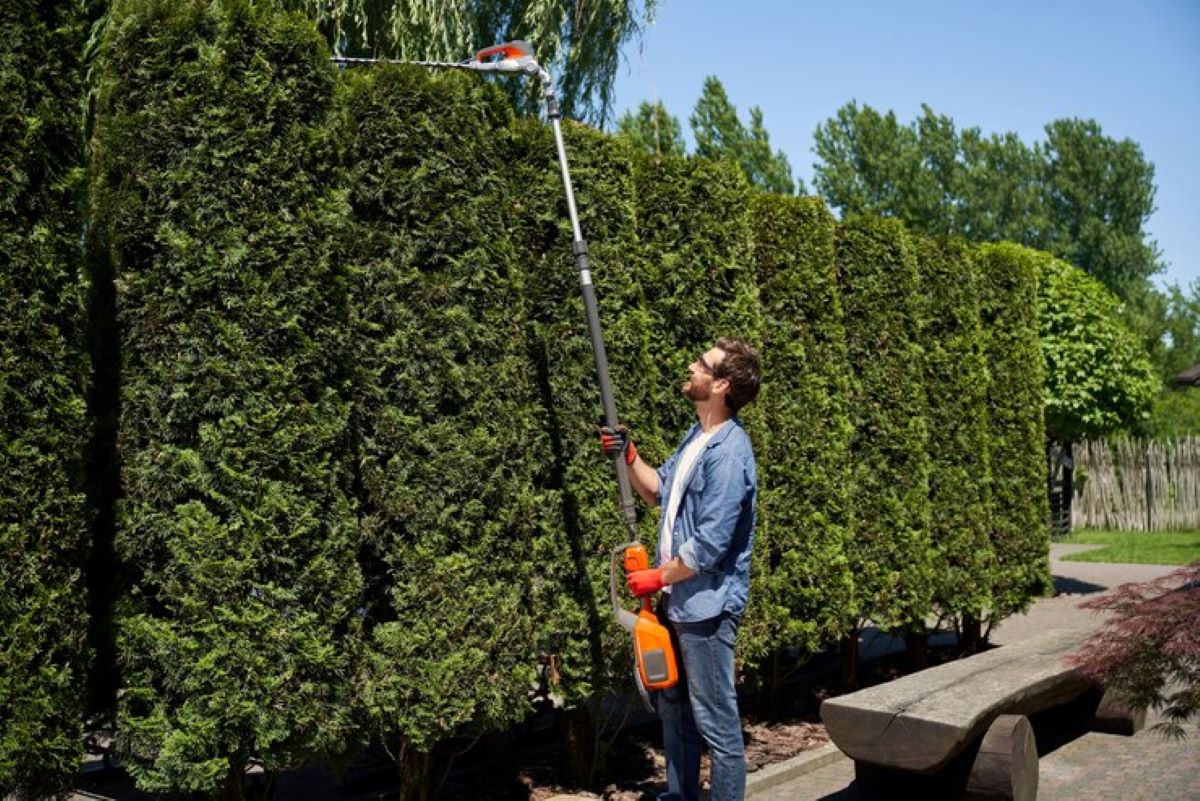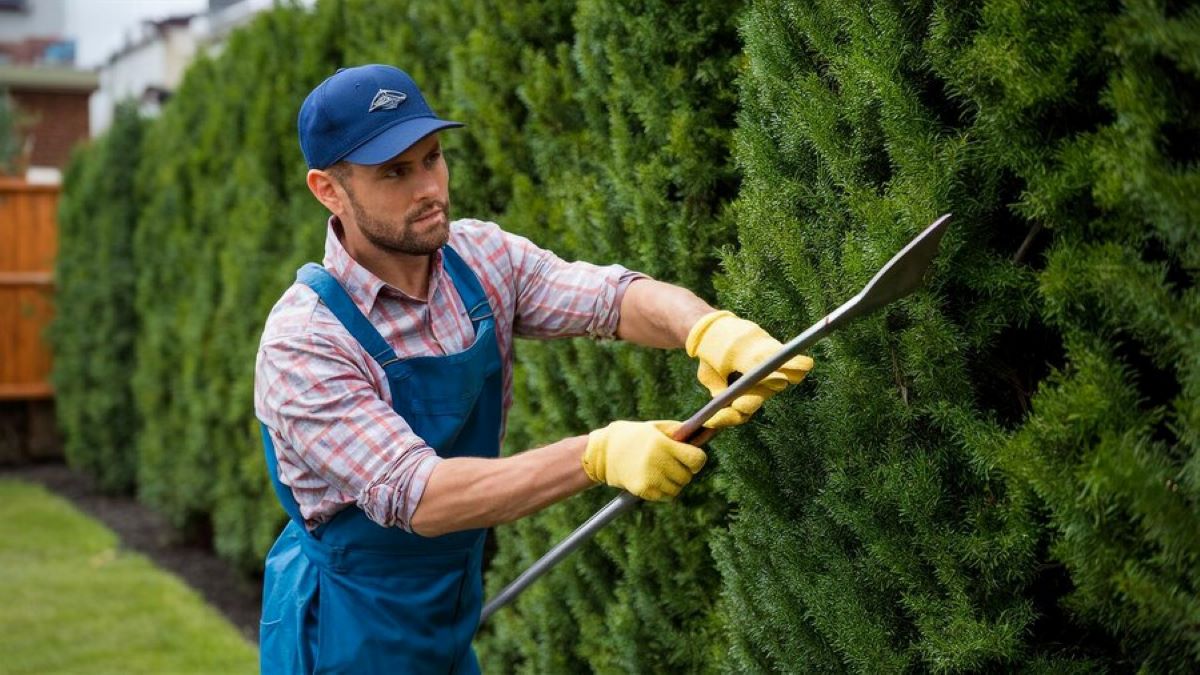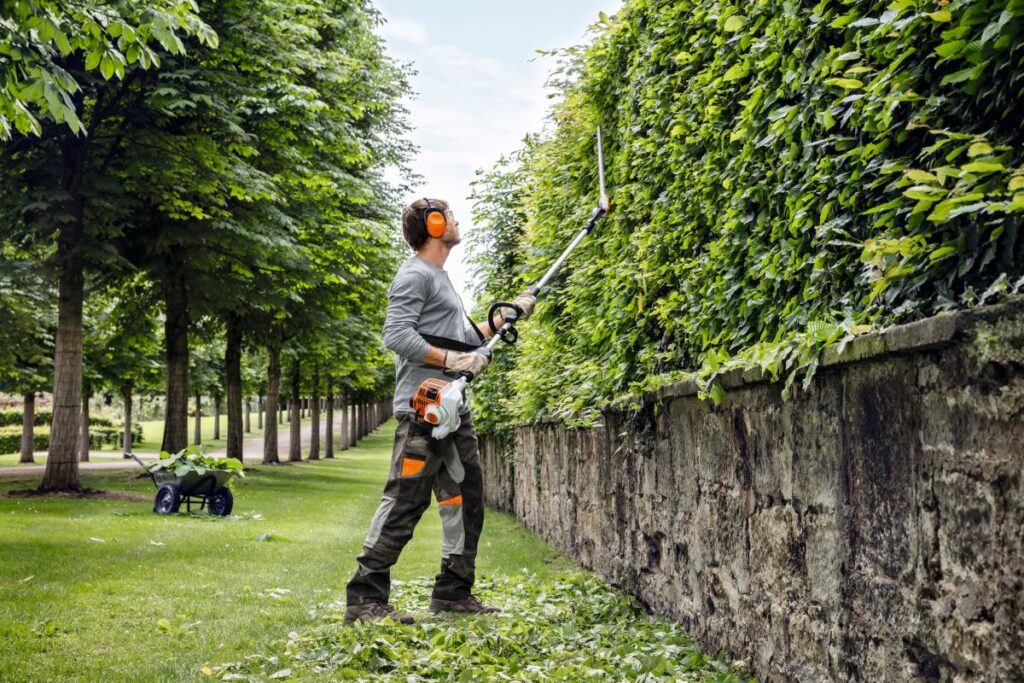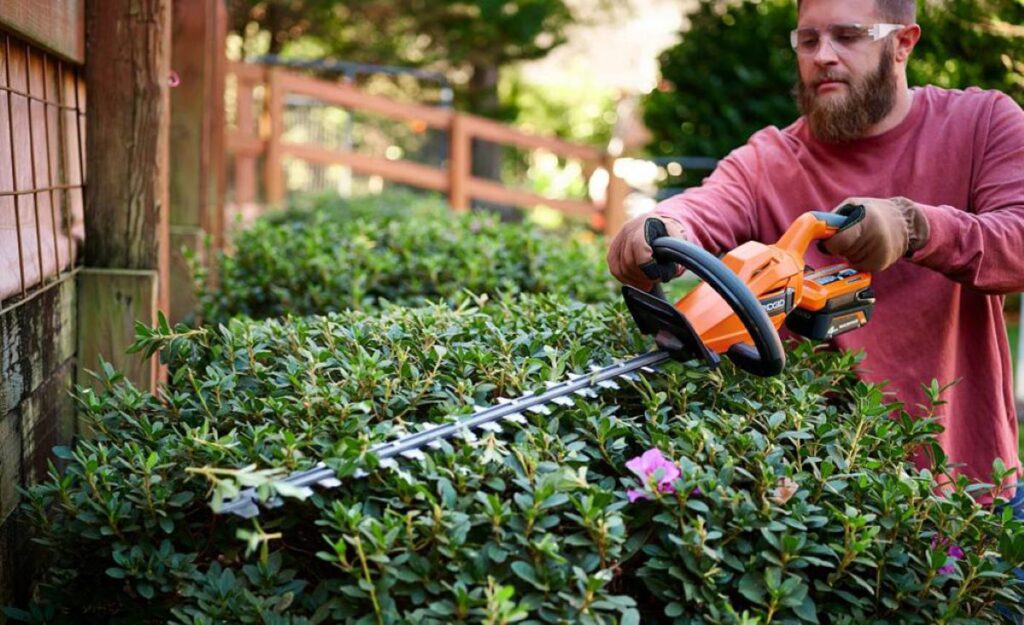Hedge Maintenance Tips from Experienced Trimmers
Well-maintained hedges serve as living boundaries, enhancing property aesthetics while providing privacy and environmental benefits. Regular hedge maintenance is crucial for preserving the health, shape, and longevity of these green assets.
Professional trimming techniques offer multiple advantages:
- Enhanced Growth Pattern: Proper cutting angles stimulate robust, even growth
- Disease Prevention: Regular maintenance identifies and addresses potential health issues
- Structural Integrity: Expert trimming maintains hedge density and stability
- Property Value: Pristine hedges contribute to increased kerb appeal
This comprehensive guide shares expert hedge maintenance tips from experienced trimmers, focusing on proven techniques for achieving healthy, well-shaped hedges. The advice draws from certified arborists’ extensive knowledge, covering essential aspects from safety preparations to professional-grade trimming methods.
Whether managing formal borders or informal screening hedges, these professional insights help create and maintain impressive green boundaries that stand the test of time.
1. Preparation and Safety for Hedge Maintenance
Professional hedge maintenance requires careful preparation and strict safety protocols. A thorough pre-trimming inspection helps identify specific hedge varieties and their growth patterns, enabling appropriate cutting techniques and timing.
Essential Pre-Trimming Checklist:
- Examine hedge structure and growth direction
- Document any diseased or damaged sections
- Note hedge species-specific requirements
- Check weather conditions – avoid wet conditions
Wildlife Protection Measures:
- Inspect hedges for active bird nests
- Look for signs of small mammal habitation
- Mark protected areas to avoid disturbance
- Schedule work outside breeding seasons
Required Safety Equipment:
- Safety goggles with side protection
- Cut-resistant gloves
- Ear defenders or plugs
- Steel-toed boots
- Long-sleeved clothing
- Hard hat for tall hedges
Worksite Preparation Steps:
- Remove fallen branches and debris
- Clear surrounding area of obstacles
- Set up stable working platform if needed
- Position warning signs for public safety
- Ensure proper lighting conditions
- Establish emergency access points
A clean, hazard-free workspace prevents accidents and ensures efficient trimming operations. Proper site preparation creates optimal conditions for precise cutting while protecting both wildlife and workers.
2. Effective Trimming Techniques for Healthy Hedges
Professional hedge trimming requires precise techniques to maintain healthy growth and aesthetic appeal. A systematic approach ensures optimal results while preserving the hedge’s natural structure.
Side Trimming Fundamentals
- Begin trimming at a 15-degree angle from the base
- Create a tapered shape wider at the bottom than the top
- This angle allows sunlight to reach lower branches
- Cut in upward strokes to prevent damage to older growth
Maintaining Even Surfaces
- Install temporary string guides between stakes for straight lines
- Use spirit levels for precise horizontal top surfaces
- Work in small sections (1-2 metres) at a time
- Step back regularly to check overall symmetry
Edge Shaping Techniques
- Sharp edges suit formal gardens and geometric designs
- Rounded edges create softer, natural appearances
- Use cardboard templates for consistent curves
- Make multiple light passes rather than heavy cuts
Preserving Hedge Thickness
- Layer cuts from outside to inside
- Remove no more than one-third of new growth
- Maintain depth through gradual trimming
- Leave internal branches intact for structural support
Timing and Conditions
- Trim hedges when foliage is completely dry
- Schedule maintenance every 4-6 weeks during growing season
- Avoid trimming during extreme heat or frost
- Plan cuts based on specific species’ growth patterns, such as Kiwifruit, which may require different handling.
These techniques protect hedge health while achieving professional results. Regular maintenance using proper methods encourages dense growth and extends the hedge’s lifespan.
3. Essential Tool Maintenance Practices for Hedge Trimmers
Proper maintenance of hedge trimming equipment ensures optimal performance and extends tool lifespan. Regular checks and maintenance routines vary based on the type of trimmer used.
Pre-Use Inspection Checklist:
- Check blade sharpness and alignment
- Inspect safety guards and handles
- Verify all screws and bolts are tight
- Test safety switches and triggers
- Clear debris from ventilation slots
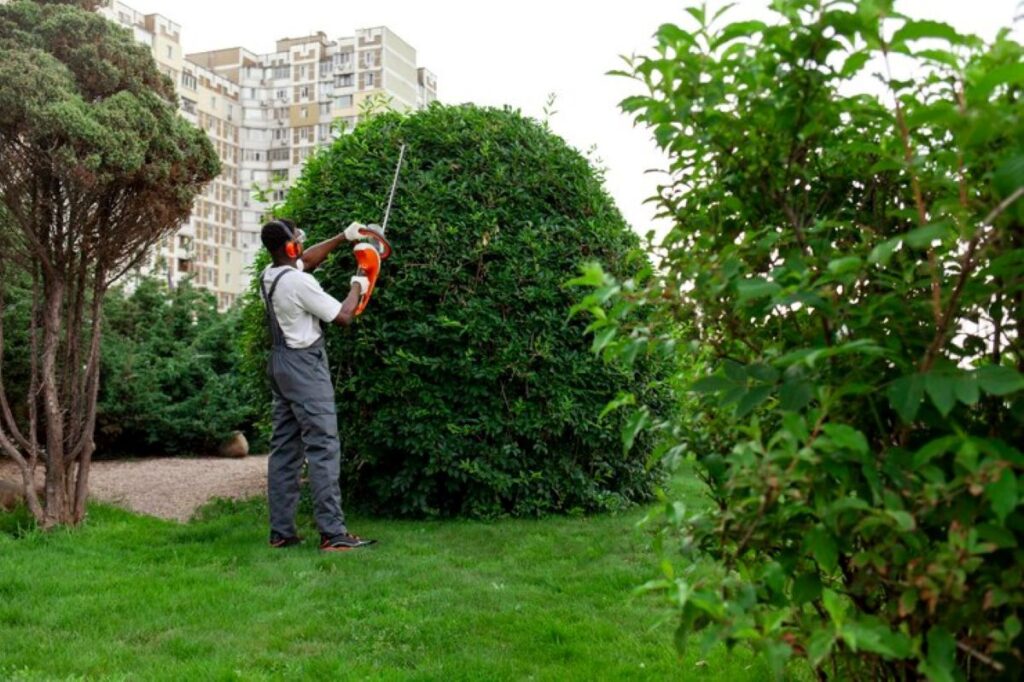
Petrol Trimmer Care Requirements:
- Inspect carburettor for fuel leaks or blockages
- Replace spark plugs after 100 hours of operation
- Clean air filter every 25 hours of use
- Check fuel lines for cracks or wear
- Replace pickup body annually
- Empty fuel tank before extended storage
Cordless Trimmer Maintenance:
- Monitor battery charge levels
- Check LED diagnostic indicators
- Clean battery contacts
- Store batteries at room temperature
- Replace damaged battery packs
- Verify charger functionality
Electric Trimmer Safety Protocols:
- Disconnect power before any maintenance
- Examine power cords for cuts or exposed wires
- Check plug connections for damage
- Clean cooling vents regularly
- Test circuit breaker functionality
- Inspect extension leads for wear
Post-Use Care:
- Remove plant debris from blades
- Apply protective oil coating
- Store in dry, secure location
- Record maintenance dates
- Document any operational issues
Professional arborists recommend creating a maintenance log to track service intervals and identify potential issues before they affect performance. Regular maintenance reduces downtime and ensures reliable operation during critical trimming periods.
4. Blade Sharpening for Optimal Performance in Hedge Trimming Tools
Regular blade sharpening is an essential maintenance task for hedge trimming tools. Professional arborists recommend sharpening blades every 25 hours of active use to maintain peak cutting performance.
Key Signs Your Blades Need Sharpening:
- Uneven or ragged cuts across hedge surfaces
- Increased resistance during trimming operations
- Visible damage or nicks on blade edges
- Plant material snagging between blades
- Unusual vibrations during operation
Professional Sharpening Services
Professional blade sharpening services offer precision results through specialised equipment and expertise:
- Basic hedge trimmer blades: £8-£15
- Commercial-grade trimmers: £20-£35
- Complex multi-blade systems: £40-£45
DIY Sharpening Equipment Requirements:
- Flat mill file (200-300mm)
- Diamond sharpening stone
- Heavy-duty vice grip
- Safety gloves
- Protective eyewear
- Clean cloth for debris removal
Essential DIY Sharpening Steps:
- Secure blade in vice grip
- Clean blade surface thoroughly
- Maintain original blade angle
- File in single direction
- Test blade sharpness
- Apply light machine oil
Safety Considerations:
- Wear appropriate protective gear
- Work in well-lit areas
- Disconnect power sources
- Handle blades with extreme care
- Clean workspace from metal filings
Proper blade maintenance extends tool lifespan and ensures clean, healthy hedge cuts. While DIY sharpening saves costs, inexperienced users should consider professional services to prevent blade damage. You may like to visit https://florencetourstuscany.com/hedge-trimming-service-cost-what-to-expect/ to get more about Hedge Trimming Service Cost: What to Expect.
5. Compliance with Local Regulations in Hedge Maintenance
Sydney’s local councils have strict rules about how hedges should be taken care of and when they can be removed. These rules are in place to protect the greenery in urban areas and make sure that plants are managed responsibly in different Local Government Areas (LGAs).
Key Compliance Requirements:
- Get approval from the council before removing hedges that are taller than a certain height
- Submit detailed maintenance plans for properties that are listed as heritage sites
- Follow restrictions during bird nesting seasons
- Comply with noise control regulations during permitted working hours
Level 2-5 certified arborists play a crucial role in navigating these requirements. These professionals:
- Assess hedge conditions and provide compliance documentation
- Submit necessary permit applications
- Liaise with council authorities
- Ensure work meets local environmental standards
Engaging qualified arborists helps avoid potential fines and penalties while maintaining legal compliance. Professional arborist reports strengthen permit applications and provide documented evidence of proper maintenance practices. These specialists understand specific LGA requirements across Sydney’s North Shore, Hills District, and surrounding regions, ensuring hedge maintenance aligns with local regulations.
6. Benefits of Engaging Certified Arborists for Hedge Care
Level 2-5 certified arborists bring specialised expertise to hedge maintenance through:
1. Advanced Health Assessment
Certified arborists possess the knowledge and skills to conduct thorough health assessments of hedges. They can identify various issues that may affect the overall well-being of the plants, including:
- Disease identification
- Pest infestation detection
- Nutrient deficiency analysis
- Growth pattern evaluation
2. Precision Equipment Mastery
With their extensive training and experience, professional arborists are proficient in using a wide range of equipment for hedge care. This includes:
- Laser-guided trimming tools for accurate cuts
- Professional-grade power equipment for efficient maintenance
- Specialised pruning instruments for specific plant species
- State-of-the-art safety gear to ensure a secure working environment

3. Customised Care Plans
Every hedge is unique and requires tailored care to thrive. Certified arborists understand this and develop customised maintenance plans based on factors such as:
- Species-specific maintenance schedules
- Seasonal growth considerations
- Climate-adapted trimming techniques
- Long-term hedge development strategies
The application of professional-grade equipment by certified practitioners results in precise cuts that promote healthy regrowth while maintaining aesthetic appeal. These experts apply scientifically-proven techniques to enhance hedge density, manage growth rates, and prevent common diseases.
Professional arborists utilise thermal imaging technology to detect internal decay and structural issues within hedges. Their expertise extends to soil analysis and root system evaluation, ensuring comprehensive hedge health management.
Conclusion
Professional hedge maintenance delivers exceptional results that enhance property aesthetics and value. The expertise of certified arborists, combined with proper trimming techniques and tool maintenance, creates healthy, long-lasting hedges that stand out in any landscape.
These expert strategies provide:
- Precision-shaped hedges that maintain their form throughout growing seasons
- Enhanced plant health through proper cutting angles and timing
- Safe maintenance practices that protect both property and people
- Compliance with local regulations to avoid potential issues
Implementing these professional hedge maintenance tips transforms basic garden maintenance into an art form. The investment in proper tools, techniques, and certified arborist services pays dividends through robust hedge growth and stunning visual appeal.
The path to superior hedge care lies in adopting these time-tested methods from experienced trimmers. Professional guidance ensures hedges receive the exact care needed to thrive and beautify outdoor spaces for years to come.
Hedge Maintenance Tips from Experienced Trimmers Read More »

